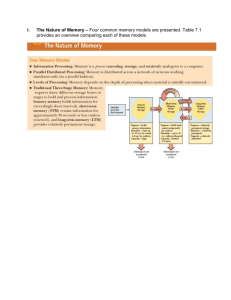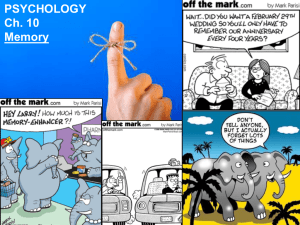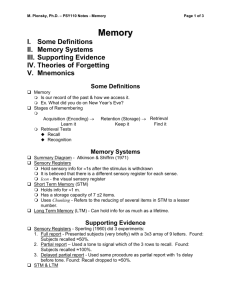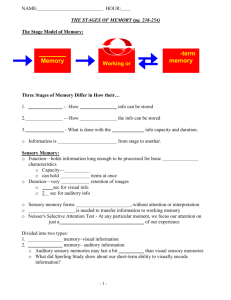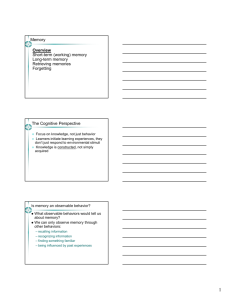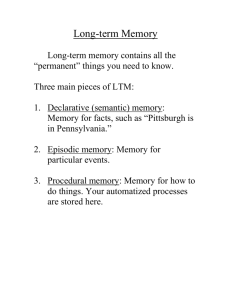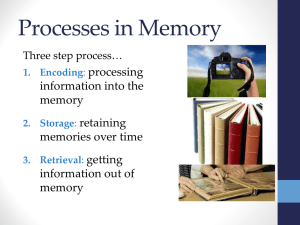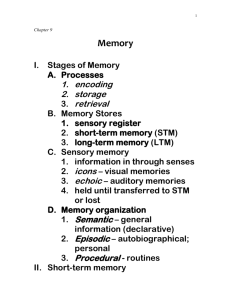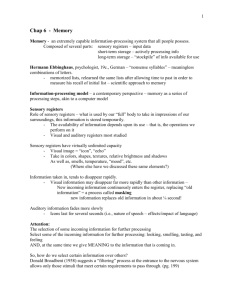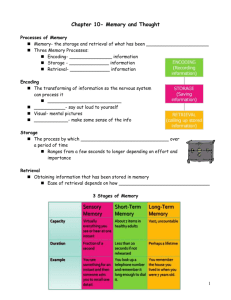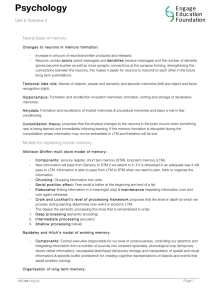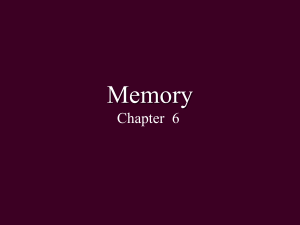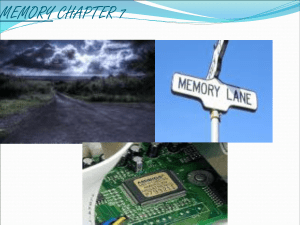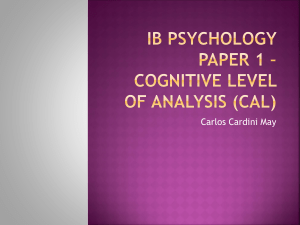Modules 23 – 27: Memory
advertisement
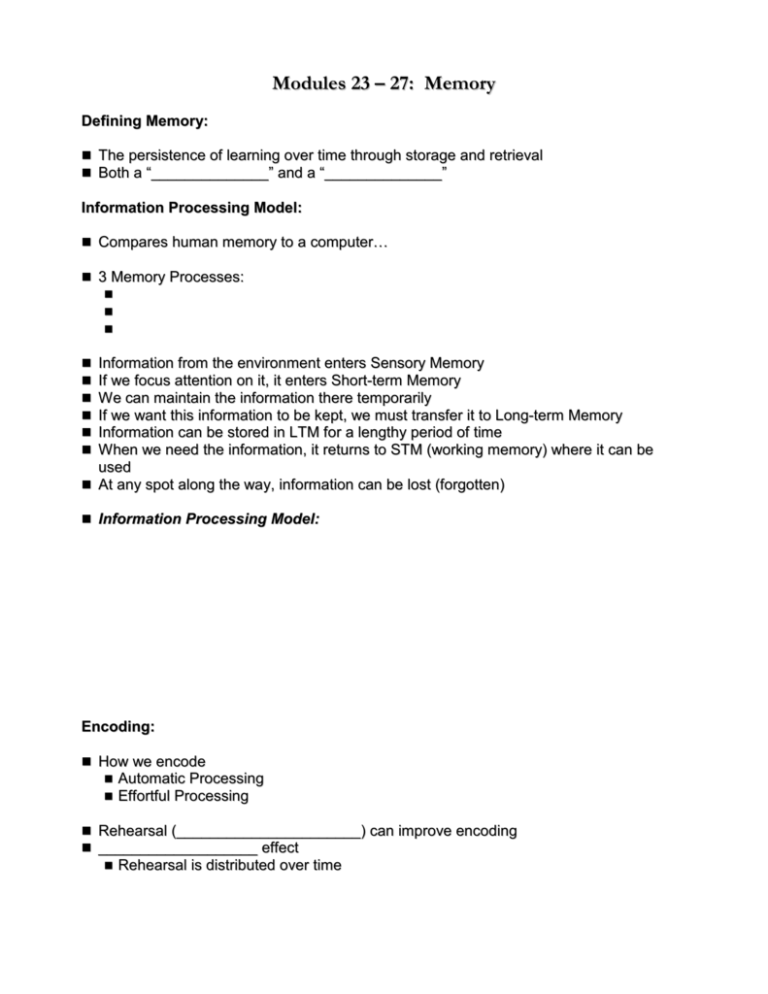
Modules 23 – 27: Memory Defining Memory: The persistence of learning over time through storage and retrieval Both a “______________” and a “______________” Information Processing Model: Compares human memory to a computer… 3 Memory Processes: Information from the environment enters Sensory Memory If we focus attention on it, it enters Short-term Memory We can maintain the information there temporarily If we want this information to be kept, we must transfer it to Long-term Memory Information can be stored in LTM for a lengthy period of time When we need the information, it returns to STM (working memory) where it can be used At any spot along the way, information can be lost (forgotten) Information Processing Model: Encoding: How we encode Automatic Processing Effortful Processing Rehearsal (______________________) can improve encoding ___________________ effect Rehearsal is distributed over time Encoding meaning Acoustic Levels of processing Deeper level = Storage: Sensory Memory Short-term Memory ____________________ Memory Long-term Memory Sensory Memory: Purpose of Sensory Memory Accepts sensory information from the environment Acts as a ________________________ Duration of Sensory Memory Information remains here for an average of about ____________________ Paying _________________ to this info passes it along to short-term memory Short-term Memory: Purpose of STM 1= 2= 3= Maintenance Rehearsal Repetition intended to ________________________________________ Duration of STM Unrehearsed…about _______________________ Rehearsed… Capacity of STM Magic Number of STM = _____________________________ Examples Increasing STM…___________________________ Chunking: Organizing items into familiar, manageable units Examples… Try this one… ESPNPCTMDNBCRN = 14 bits to 5 bits Try another one… 2006911062806137 = 16 bits to 5 bits Long-term Memory: Function of LTM Duration of LTM Capacity of LTM Need for ____________________________! Piles vs. File cabinet analogy (“File, don’t pile”) _____________________________ Similar to chunking in STM __________________________ Rehearsal Way to get info from STM to LTM Making it _____________________ Attaching the new info to something already in LTM In PSY 111…__________________________________________ Information retrieved gets sent back to STM (working memory) Example: W ho is considered the father of modern psychology? Types of Long-Term Memories: 1. Semantic 2. Episodic 3. The “encyclopedia” in memory The “autobiography or diary” in memory Procedural The “how-to” manual in memory A special episodic memory: ______________________MEMORIES A clear memory of an emotionally significant moment or event Encode all the sensory details of the event Retrieval of event brings back all details Can be very happy memories or tragic ones Examples Accuracy of flashbulb memories… Retrieval of Memories: The third memory process _________________________ Direct retrieval of previously stored material Types of test questions… __________________________ Identification of previously stored material Types of test questions… __________________________________Experience Feeling of knowing Inability to recall a memory ________________________________ Cues “Clue” or reminder to help spark LTM Often cures ____________________________________ Context Effects: Bodily or internal state Encoding = Retrieval Example… Physical environment Encoding = Retrieval Example… 2 Study Skills Considerations: ___________________________________Effect Tendency for distributed study/practice to yield better long-term retention than is achieved through massed study/practice ___________________________________ Effect Information at the beginning and end of a “list” is better remembered than information in the middle Forgetting: ________________________________ Forgetting Curve: Much of what we learn, we quickly forget The course of forgetting is initially rapid, then levels off with time Ebbinghaus Forgetting Curve: Theories of Forgetting: 1. Pseudo-forgetting The information was never actually encoded in the first place Due to internal and external distractions (not paying attention to the material) 2. When information competes for space in memory Two ways: Previous info interferes with encoding new New info interferes with retrieving old 3. Memories fade over time because they are not used Use them or lose them! 4. Inability to recall painful memories because material has been pushed into the unconscious An automatic process 5. Inability to recall painful memories because material was consciously pushed out of awareness Amnesia: Forgetting due to some _________________________________to the brain ____________________________________AMNESIA Forgetting memories that were encoded and stored BEFORE the trauma ____________________________________ AMNESIA Inability to encode new memories “50 First Dates” or “Memento” Improving Memory: Study repeatedly to boost long-term recall Spend more time rehearsing or actively thinking about the material Make the material personally meaningful Activate retrieval cues Minimize interference Use mnemonic devices Using Mnemonics: Can be universal or unique Should be geared toward your _____________________________ Examples:



